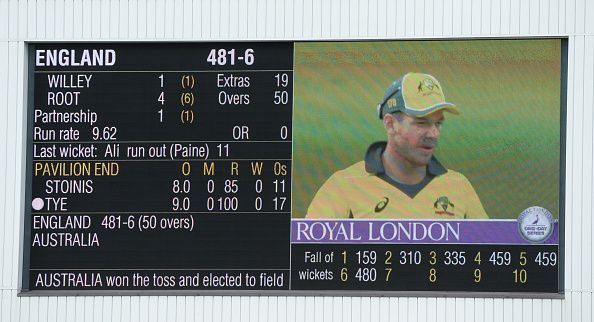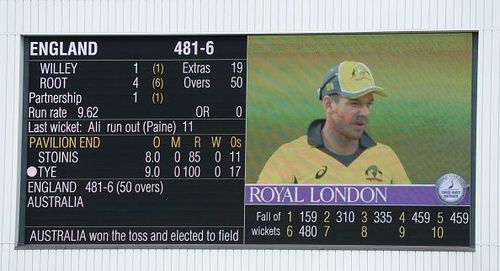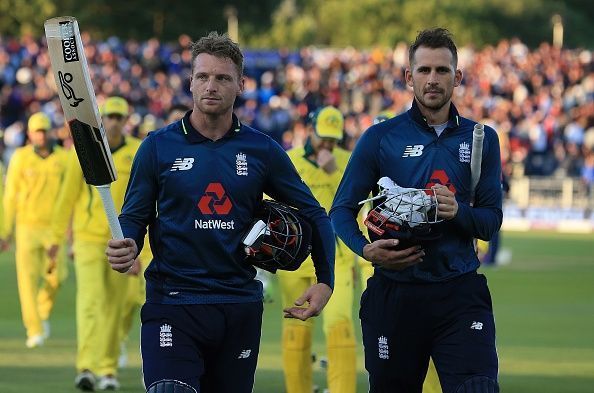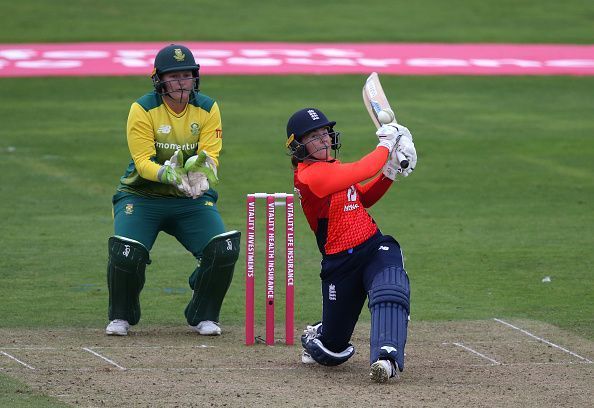
Two new-balls and field restrictions: Cricket's slow metamorphosis into a batsman's game

What's the story
The press conference prior to India touring England and Ireland has just concluded, and if there is one important pointer to pick out and dissect, from what captain Virat Kohli and coach Ravi Shastri spoke of, would be their take on the rule of using two new balls every innings. Virat Kohli opined that because of the two-new-balls rule, the batsmen find it easier to score in the death overs as the reverse-swing factor is no longer present.
The details
"I think it’s brutal for the bowlers. I have played ODI cricket when there was only one new ball allowed and reverse swing used to be a massive factor in the latter half of the innings, which I think as a batsman was more challenging," Kohli opined.
Kohli's statement was backed by many people from the sport, the most noted among them being Sachin Tendulkar himself and Wasim Akram himself, who was once a champion of reverse-swing. Both of them took to Twitter to express their displeasure at the new mandate:
In case you didn't know...
The rule itself is nearly seven years old, with the ICC (International Cricket Council) introducing it way back in October 2011, owing to "boring middle overs" as the reason. As bizarre as this sounds, further rules brought forth, later on, caused further deterioration in conditions for bowlers, as they became mere objects to be slogged mercilessly by the batsmen with their willows.
The rule was such that no ball used in a game would be used for more than twenty-five overs, which meant that reverse-swing would be eliminated.
For those not familiar, reverse swing happens only with the old ball, and that was one of the prime weapons of bowling greats like Wasim Akram and Waqar Younis, to help them pick wickets and restrict the opposition from scoring, in the death overs. It has also made life harder for spinners, who tend to prefer bowling with an older ball.

There has been considerable opposition to the rule from several cricketing nations including India over the years, as scoring rates have increased with every passing series.
On one such occasion, MS Dhoni, the then Indian captain, even said: "We need to sit and think about if 350 is the new 280 or 290 or 300. A few of the bowlers are disappointed, they actually feel it will be better off to put a bowling machine there."
This was during the record Ind-Aus series of 2013, where India won the series chasing 350+ scores twice, and with Rohit Sharma's 209 enabling India to fly to 383 in another, batting first.
As if the bowlers' lives weren't harder already, the ICC then went on to create a new rule that made it mandatory for an extra fielder to stay inside the 30-yard circle during the powerplay overs. Though this rule was relaxed in 2015, it has provided little relief to bowlers.
What's next
Gone are the days where we looked at South Africa's 438 and Australia's 434 with awe. The record has been broken over and over again since then. Teams have already started chasing the possibility of scoring 500 runs in a single ODI innings.
Earlier last week, Kiwi women created an all-time record of highest ever ODI total, scoring 490 against Ireland women. Just three or four days later, the English men had a chance to break it but didn't coming just nine runs short at 481 against Australian men. Just a day later, The Kiwi women set up a record T20I innings total in women's cricket at 216 against South Africa women, only to be broken a few hours by England women, who pushed the total to 250 against the same hapless Protean opposition.

The attack has been severe especially in the ongoing Eng-Aus men's series. 342, 481, 318 in 45 overs - these were the English scores as we saw a worn out and clueless set of Aussie bowlers.
With the new rules bringing only a marginal increase in average run-rates globally - from 5.16 to 5.37, the case of England alone has been astounding - their run rates rose from 5.2 before to 6.03.
With India relying on their deep batting strength and head out to face the English at their home, it appears to be a very unfortunate season up ahead for the bowlers - whether Indian or English.
What do you think of the rule to play two new balls in every innings? Do you think the batsmen are gaining an unfair advantage in the sport, with all the field-restricting rules and the new-ball rules?
Do you think it's time for the ICC to get back to the old system to bring back more balanced games? Let us know in the comments below: